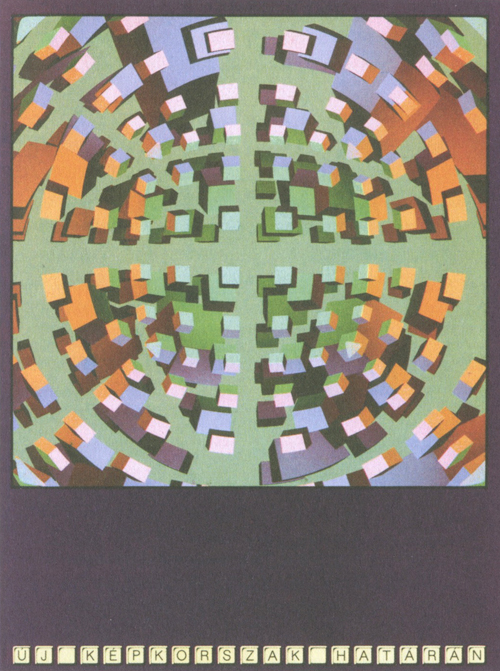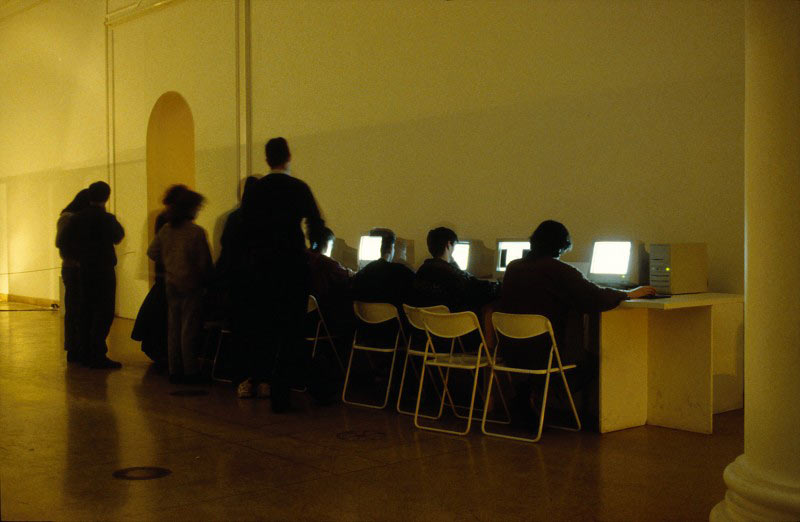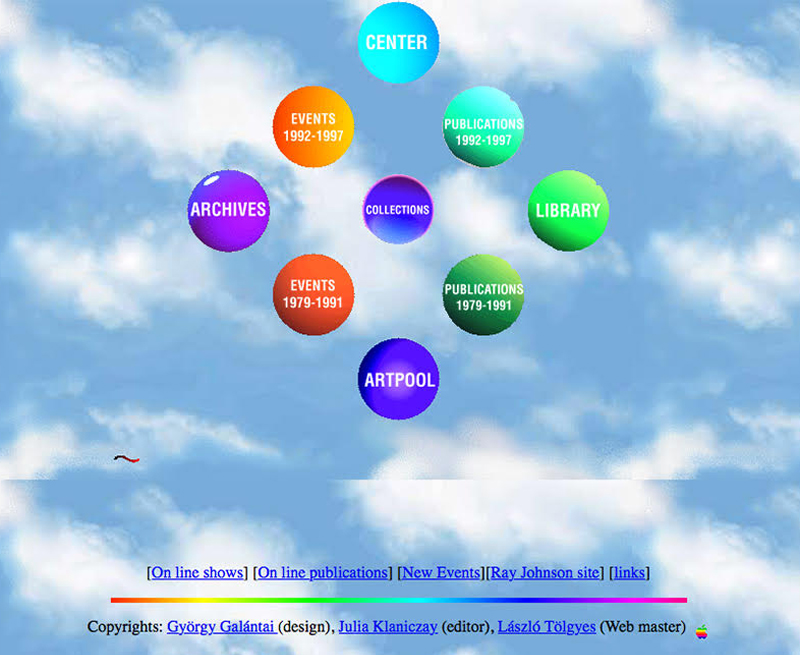Information wants to be free! |
|
| (...) New possibilities for communication open up: we can record our own personal gestures, our individual impressions and our thoughts inspired by the moment. We can fill the blank pages of the ever-growing number of servers on the web with our scrawled graffiti. The unprecedented opportunity for any participant in the network to open up a global public sphere, a world-scale publishing opportunity. >>> |
| NOOTROPIC web group message, February 1995 |
| |
| NOOTROPIC was a group of students working together, from the Intermedia Department of the Hungarian University of Fine Arts, and János Tölgyesi and the Department of Psychology at ELTE in 1993–94.
The course started a few weeks after the birth of the first web browser, MOSAIC. |
Net art from the Intermedia Department >>> |
|
 |
| Book by Miklós Peternák, On the Bound of a New Visual Era, 1989 |
| Cover art by Dr László Neumann, Local Object-Hypothesis, 1987 |
|
| The whole country was full of opportunities. There was one place where you could go to get free internet – it was always full, of course – but it wasn't that special and the artists too were like, this is a catch-up era with the West, and C³ is part of that. |
| |
| In the case of net.art, it was not just about the internet, but also about different "matches". JoDi matched the web with video games, Lialina with storytelling, Shulgin with the world of low tech, and Bunting with hiking and making friends. Olia Lialina's 1997 work made at C³ – Agatha Appears – included a trip around the world, which was put together by placing pages on servers around the world with the help of her friends. In the URL you could see where you were as a viewer, so she used technology innovatively to unfold the story. |
| András Szőnyi |
|
|
In the 90s, it was difficult to get online. Some universities would have it, but on an experimental level. The technicalities (available modem, phone line) of it as well as the price put people off, but also nobody knew what it was, how it could be used. The first publicly available Internet hotspots in Hungary were set up for the exhibition Butterfly Effect in early 1996 at Kunsthalle Budapest, by C³ Foundation. There were 5 computers available and they puzzled the public. There were similar machines set up at the Internet Galaxy events, and Artpool had access, but they operated from a flat back then. At C³ eventually, there was an internet lab, with a free service: you had to register, drop-off visits were limited in time but that was also possible. There was even someone who assisted people while using the Internet on one of the 10 machines. After that, Internet Cafés were popping up, but there you had to pay.
|
| |
 |
| |
The reason for the founding of C³ Foundation in 1996 was the success of the Butterfly Effect exhibition and the transformation of the funding structure: SCCA wanted to fund a program promoting the Internet, which could include art-oriented activities to encourage project thinking. >>> |
| Márton Fernezelyi, Miklós Peternák, C³ Foundation |
|
Artpool 1995–2020 >>> |
|
 |
|
| |
György Galántai, Plan for Artpool's website, 1997
Courtesy of György Galántai, Artpool
|
 |
| Time travel to Artpool's first website menu |
| Artpool events in 1996 |
|
C³ 1996–2022 >>> |
|
| We, the sons of the end of the 20th century, have sometimes, in reckless moments, believed that we would succeed in mastering some of the newer and newer tools produced daily by the technical civilisation of our time. (...) |
| NOOTROPIC web group message, February 1995 |
|
| |
 |
| |
 |
| |



